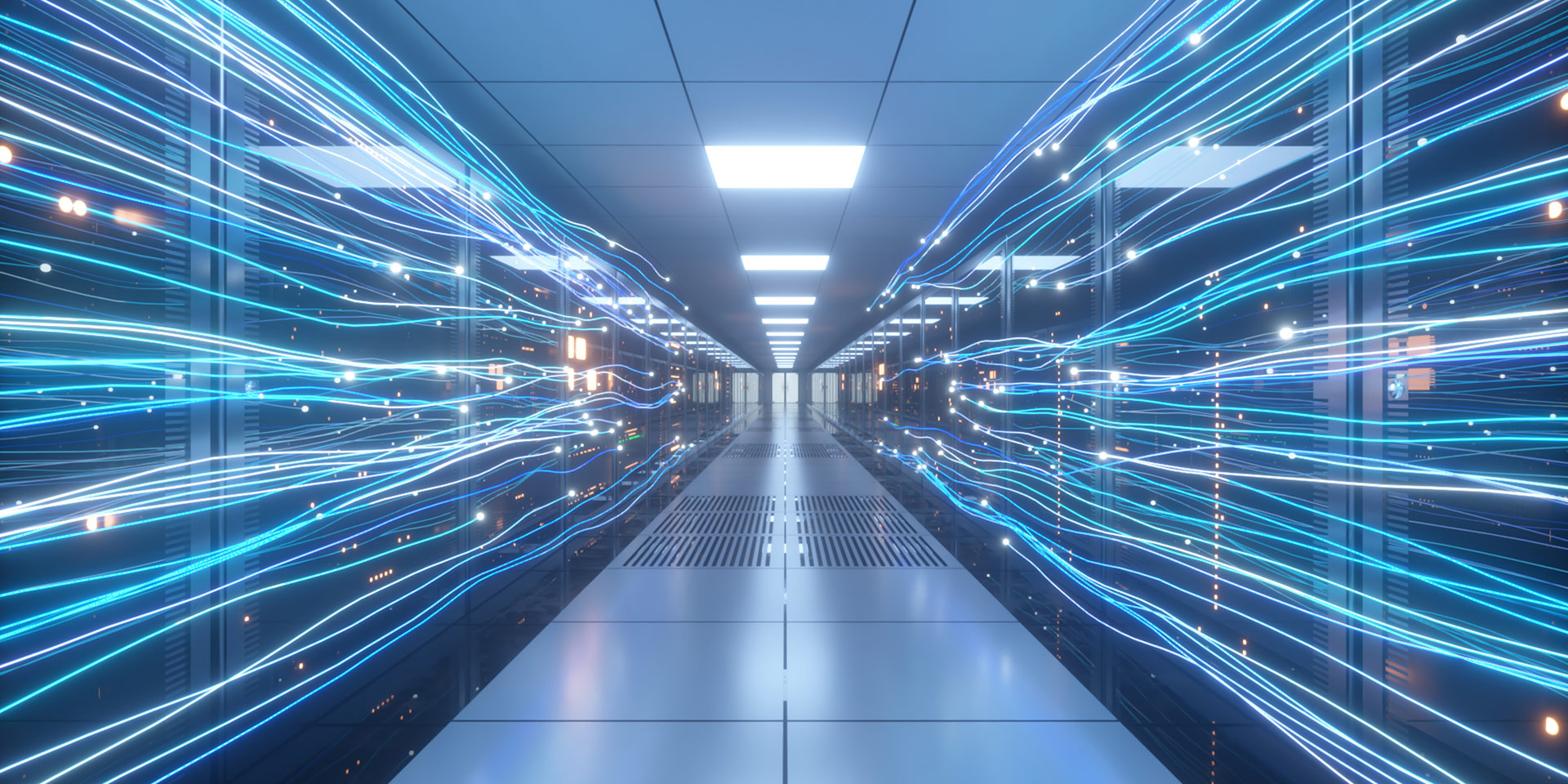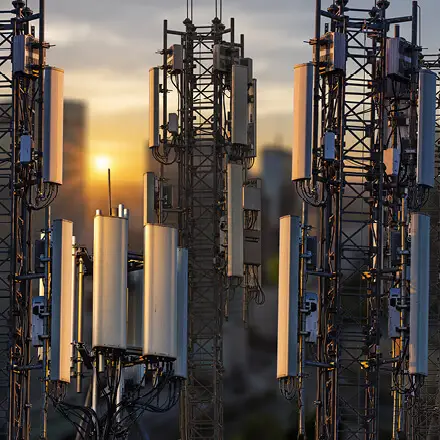Veröffentlicht am 20. Januar 2022
Die Digitalisierung als Umweltkiller?
Die Digitalisierung schreitet in großen Schritten voran. Was gestern noch Zukunftsmusik war, ist heute schon möglich. Vor allem 5G ermöglicht innovative Anwendungen, denn mit 5G können Daten zehnmal schneller übertragen werden als noch mit 4G. Video-Streaming in Ultra-HD, KI-Anwendungen zu Hause, in Unternehmen und in der Industrie, autonomes Fahren und vieles mehr wird erst durch 5G möglich. Zudem sollen smarte Systeme Energie sparen und die Nachhaltigkeit fördern. Aber stimmt das wirklich?
Experten gehen vom Gegenteil aus: Durch immer mehr Möglichkeiten und immer bessere Endgeräte wird der Energieverbrauch durch 5G steigen – und zwar um ein Vielfaches. Durch klug angewendete KI-Technologien wie Smart-Home-Systeme wird die Energie zwar effizienter genutzt, aber die zahlreichen neuen Möglichkeiten und verbesserten Technologien sind regelrechte Energiefresser. Hinzukommt, dass neue oder bessere Anwendungen auch mehr genutzt werden. Schließlich ist 5G darauf ausgerichtet, über das Smartphone mehr Möglichkeiten zu schaffen und Dinge zu vereinfachen.

Dazu gehört beispielsweise das Streamen von Videos. 5G verspricht Datenübertragung in Echtzeit – selbst großer Datenmengen. Bisher war es ziemlich nervig, wenn Videos lange laden mussten und immer wieder Hänger hatten.
Mit 5G soll Video-Streaming überall ohne lästiges Neuladen möglich sein. Und auch die Bildqualität kann damit verbessert werden, denn jetzt ist das Streamen auf dem Smartphone sogar in Ultra-HD bzw. 4K möglich. Die Anbieter von 5G und Smartphone-Hersteller gehen deshalb davon aus, dass mit 5G viel mehr Nutzer Videos auf dem Smartphone ansehen werden.
Klingt gut, hat aber einen Haken: Das Streamen in Ultra-HD benötigt zehnmal mehr Energie als in bisheriger HD-Qualität. Für die Umwelt bedeutet das: Streaming in Ultra-HD stößt viermal mehr CO2 aus als Streaming in normaler HD-Qualität.
Auch von autonomem Fahren ist immer wieder die Rede. Selbstfahrende Autos sind besonders ausgetüftelte KI-Systeme. Jedoch verbraucht KI enorm viel Energie. Ein einziges selbstfahrendes Auto erzeugt an einem Tag rund 4.000 GB Daten – entsprechend hoch ist der Energieverbrauch. Auch Smart-Home-Systeme, die auf der einen Seite den Stromverbrauch zu Hause senken sollen, benötigen auf der anderen Seite enorm viel Energie durch das ständige Übertragen großer Datenmengen.

Durch Video-Streaming in Ultra-HD und generell mehr Streaming sowie durch neue KI-Anwendungen und immer mehr Smart-Home-Systeme werden letztlich auch mehr Rechenzentren benötigt. Experten schätzen, dass der Energieverbrauch in Rechenzentren in den nächsten zehn Jahren um mehr als 60 Prozent steigen wird – das ist die Leistung von rund 600 großen Windkraftanlagen, die zusätzlich benötigt würden, wenn man auf saubere Energieerzeugung setzen will.
Denn solche Mengen an zusätzlicher Energie mit Kohlekraftwerken zu decken, würde den CO2-Ausstoß um ein Vielfaches erhöhen und alle Anstrengungen für den Klimaschutz zunichtemachen. Doch so schnell wie sich die Digitalisierung entwickelt, ist fraglich, ob dafür auch genügend erneuerbare Energien zur Verfügung stehen werden.
Somit ist die versprochene Energieeffizienz, die 5G bringen soll, eine Farce. Denn unterm Strich wird durch viel mehr Nutzung von digitaler Technik die Energieeinsparung von 5G wieder zunichtegemacht – und der CO2-Ausstoß sogar erhöht.
5G ist in Deutschland nahezu flächendeckend verfügbar und wird den Shift von analog zu digital besiegeln – in allen Generationen. Damit ist klar, dass energiefressende Anwendungen wie das mobile Video-Streaming oder Smart Home in naher Zukunft immer mehr genutzt werden – und die Digitalisierung damit nicht weniger, sondern mehr Energie verbraucht und den CO2-Ausstoß entsprechend erhöht.

Die Digitalisierung bietet uns viele Möglichkeiten. Doch jeder sollte sich genau überlegen, wie viel davon er wirklich braucht. Warum einen Film auf dem Tablet streamen, wenn er gerade im Fernsehen läuft? Warum mit der App statt mit der Hand die Kaffeemaschine bedienen? Jede mobile Anwendung erhöht den Energieverbrauch und somit den CO2-Ausstoß – dessen sollte man sich bewusst sein.
Hinzukommt, dass von jedem digitalen Gerät eine Strahlenbelastung ausgeht, die uns belastet und unserer Gesundheit auf Dauer schaden kann. Gerade deshalb sollte die digitale Transformation mit einem größeren Bewusstsein und Achtsamkeit auch für die eigene Gesundheit verbunden sein. So digital wie nötig, so sicher wie möglich – das ist der Kerngedanke von memon.
Zur memon Technologie
Quellen:
Kroll, Matthias (2020): Die Auswirkungen des 5G Netz-Ausbaus auf Energieverbrauch, Klimaschutz und die Einführung weiterer Überwachungstechniken.
Kroll, Matthias (2021): Wie kann das verbliebene CO2-Budget gerecht auf die Weltbevölkerung aufgeteilt werden?
Experten gehen vom Gegenteil aus: Durch immer mehr Möglichkeiten und immer bessere Endgeräte wird der Energieverbrauch durch 5G steigen – und zwar um ein Vielfaches. Durch klug angewendete KI-Technologien wie Smart-Home-Systeme wird die Energie zwar effizienter genutzt, aber die zahlreichen neuen Möglichkeiten und verbesserten Technologien sind regelrechte Energiefresser. Hinzukommt, dass neue oder bessere Anwendungen auch mehr genutzt werden. Schließlich ist 5G darauf ausgerichtet, über das Smartphone mehr Möglichkeiten zu schaffen und Dinge zu vereinfachen.
Energiefresser: Streaming in Ultra-HD

Dazu gehört beispielsweise das Streamen von Videos. 5G verspricht Datenübertragung in Echtzeit – selbst großer Datenmengen. Bisher war es ziemlich nervig, wenn Videos lange laden mussten und immer wieder Hänger hatten.
Mit 5G soll Video-Streaming überall ohne lästiges Neuladen möglich sein. Und auch die Bildqualität kann damit verbessert werden, denn jetzt ist das Streamen auf dem Smartphone sogar in Ultra-HD bzw. 4K möglich. Die Anbieter von 5G und Smartphone-Hersteller gehen deshalb davon aus, dass mit 5G viel mehr Nutzer Videos auf dem Smartphone ansehen werden.
Klingt gut, hat aber einen Haken: Das Streamen in Ultra-HD benötigt zehnmal mehr Energie als in bisheriger HD-Qualität. Für die Umwelt bedeutet das: Streaming in Ultra-HD stößt viermal mehr CO2 aus als Streaming in normaler HD-Qualität.
KI und autonomes Fahren
Künstliche Intelligenz (KI) spielt schon heute eine große Rolle in vielen Bereichen, nicht nur in der Industrie. Digitale Gadgets wie Alexa und komplette Smart-Home-Systeme gehören längst zu unserem Alltag. Mit 5G wird KI immer cleverer und ein selbstverständlicher Teil unseres Lebens werden. Das ist verständlich, sind solche Systeme doch darauf ausgerichtet, uns das Leben zu erleichtern und uns eine ganz neue Art von Komfort zu bieten.Auch von autonomem Fahren ist immer wieder die Rede. Selbstfahrende Autos sind besonders ausgetüftelte KI-Systeme. Jedoch verbraucht KI enorm viel Energie. Ein einziges selbstfahrendes Auto erzeugt an einem Tag rund 4.000 GB Daten – entsprechend hoch ist der Energieverbrauch. Auch Smart-Home-Systeme, die auf der einen Seite den Stromverbrauch zu Hause senken sollen, benötigen auf der anderen Seite enorm viel Energie durch das ständige Übertragen großer Datenmengen.
Energieverbrauch in Rechenzentren steigt um 60 Prozent

Durch Video-Streaming in Ultra-HD und generell mehr Streaming sowie durch neue KI-Anwendungen und immer mehr Smart-Home-Systeme werden letztlich auch mehr Rechenzentren benötigt. Experten schätzen, dass der Energieverbrauch in Rechenzentren in den nächsten zehn Jahren um mehr als 60 Prozent steigen wird – das ist die Leistung von rund 600 großen Windkraftanlagen, die zusätzlich benötigt würden, wenn man auf saubere Energieerzeugung setzen will.
Denn solche Mengen an zusätzlicher Energie mit Kohlekraftwerken zu decken, würde den CO2-Ausstoß um ein Vielfaches erhöhen und alle Anstrengungen für den Klimaschutz zunichtemachen. Doch so schnell wie sich die Digitalisierung entwickelt, ist fraglich, ob dafür auch genügend erneuerbare Energien zur Verfügung stehen werden.
Somit ist die versprochene Energieeffizienz, die 5G bringen soll, eine Farce. Denn unterm Strich wird durch viel mehr Nutzung von digitaler Technik die Energieeinsparung von 5G wieder zunichtegemacht – und der CO2-Ausstoß sogar erhöht.
Mehr digitale Technik
Zu guter Letzt führt die rasante Digitalisierung in allen Lebensbereichen auch dazu, dass immer mehr Menschen mehr digitale Technik nutzen und mehr Endgeräte wie Smartphones, Tablets, Laptops usw. produziert werden. Digitale Technik ist schon jetzt kaum mehr eine Frage des Alters. Oma und Opa nutzen das Smartphone ebenso wie die Kids.5G ist in Deutschland nahezu flächendeckend verfügbar und wird den Shift von analog zu digital besiegeln – in allen Generationen. Damit ist klar, dass energiefressende Anwendungen wie das mobile Video-Streaming oder Smart Home in naher Zukunft immer mehr genutzt werden – und die Digitalisierung damit nicht weniger, sondern mehr Energie verbraucht und den CO2-Ausstoß entsprechend erhöht.
Bewusst mit digitaler Technik umgehen

Die Digitalisierung bietet uns viele Möglichkeiten. Doch jeder sollte sich genau überlegen, wie viel davon er wirklich braucht. Warum einen Film auf dem Tablet streamen, wenn er gerade im Fernsehen läuft? Warum mit der App statt mit der Hand die Kaffeemaschine bedienen? Jede mobile Anwendung erhöht den Energieverbrauch und somit den CO2-Ausstoß – dessen sollte man sich bewusst sein.
Hinzukommt, dass von jedem digitalen Gerät eine Strahlenbelastung ausgeht, die uns belastet und unserer Gesundheit auf Dauer schaden kann. Gerade deshalb sollte die digitale Transformation mit einem größeren Bewusstsein und Achtsamkeit auch für die eigene Gesundheit verbunden sein. So digital wie nötig, so sicher wie möglich – das ist der Kerngedanke von memon.
Zur memon Technologie
Quellen:
Kroll, Matthias (2020): Die Auswirkungen des 5G Netz-Ausbaus auf Energieverbrauch, Klimaschutz und die Einführung weiterer Überwachungstechniken.
Kroll, Matthias (2021): Wie kann das verbliebene CO2-Budget gerecht auf die Weltbevölkerung aufgeteilt werden?











